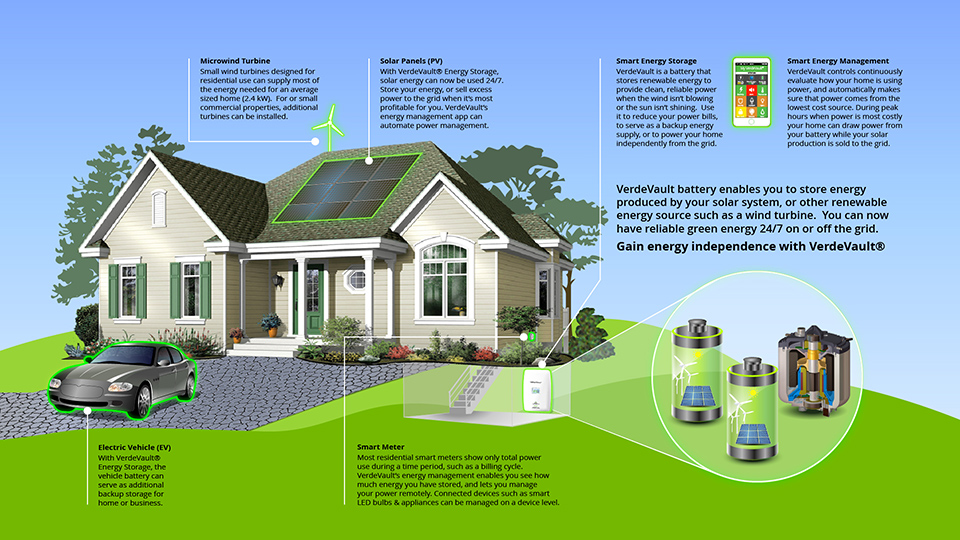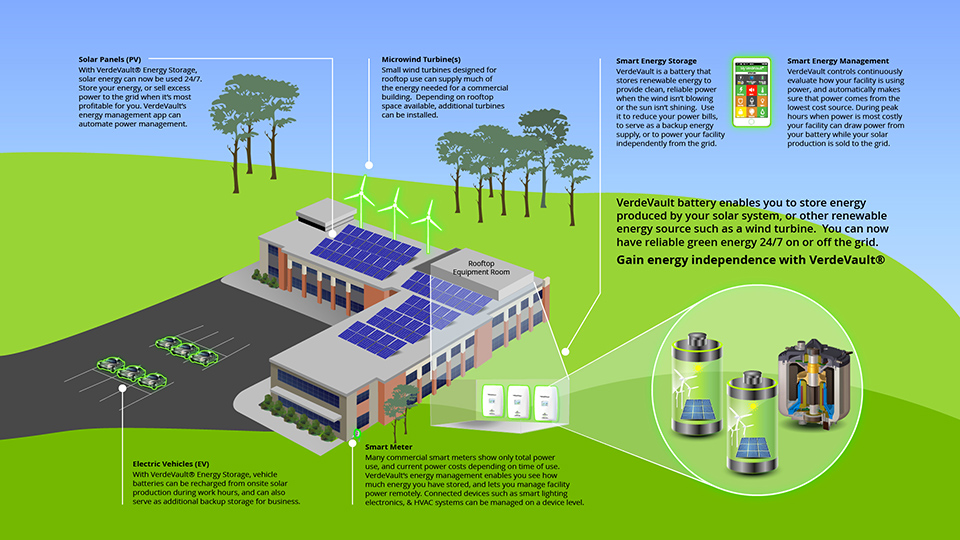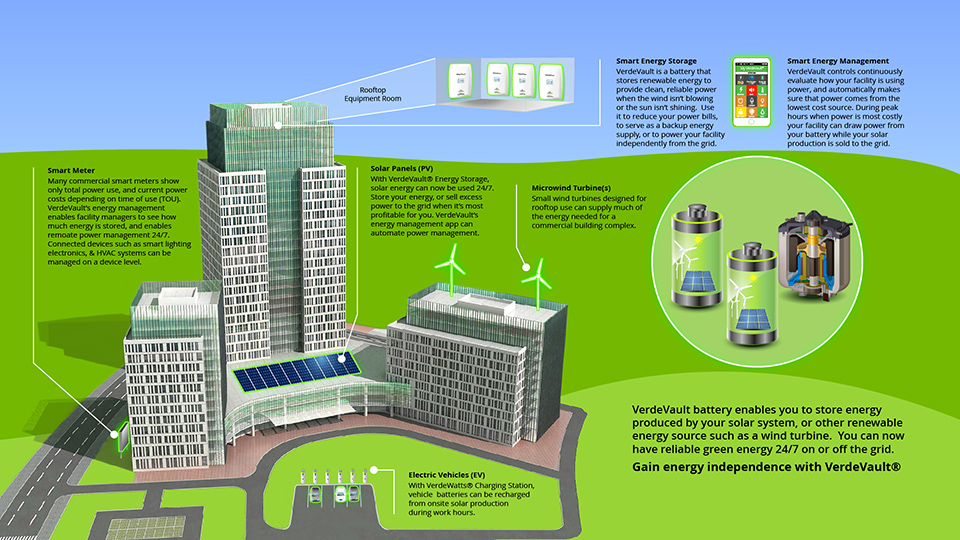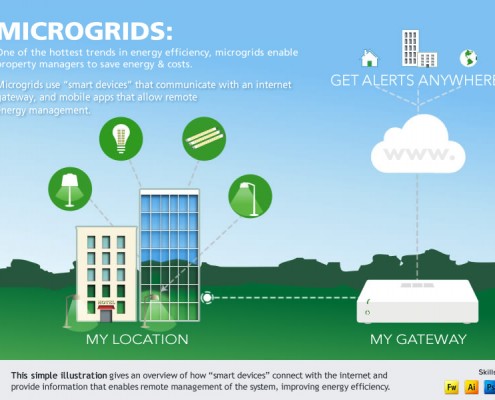Illustrating Sustainable Energy Systems
How does a sustainable energy system work anyway?
As we make the transition to sustainable energy, illustrating sustainable energy systems can help to inform the public about how they work. Anyone in a developed country uses energy on a daily basis, even if it is only to flip a light switch. But most of us have only a limited understanding of how that energy gets to our home or place of work. Many of us know even less about what makes energy “sustainable” or not.
More directly, energy companies need to provide information to city managers and/or property owners with which they can make decisions about energy projects.
Recently a client in the renewable energy industry asked us to help them tell their story with illustrations that would show the various components of a self-sustaining energy system and how they work together.
Our Process:
- First, we interviewed the client and gathered information about the various parts of a sustainable energy system.
- Rough sketches of the systems were created to make sure we had the details correctly represented.
- We then developed illustrations that show how a self-sustaining energy system works for different types of properties, from a residential scale to an industrial scale.
For the client, these illustrations will serve as an overview for more detailed information about project development and the energy system products they sell.




